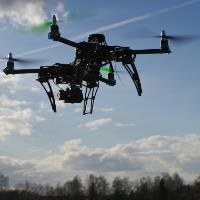(BRUSSELS) – The EU institutions agreed Monday new criteria for exporting ‘dual use’ products and technologies, including cyber-surveillance tools, that can be repurposed in ways which violate human rights.
The reviewed rules, agreed by Euro-Parliament and Council negotiators, govern the export of goods, software and technology – such as high-performance computers, drones and certain chemicals – with civilian applications that might be repurposed to be used in ways which violate human rights.
The provisional political agreement is the form of a revised regulation setting out the EU regime for the control of exports, brokering, technical assistance, transit and transfer of dual-use items.
“The new rules strike the right balance between strengthening the competitiveness of the EU, ensuring our security interests and promoting human rights,” said German economic affairs minister Peter Altmaier, for the EU presidency: “Thanks to the new rules, we will in the future be better equipped to allow legitimate trade to be carried out smoothly, but also to put an emphasis on control of certain technologies, especially cyber-surveillance items, which can be misused in connection with human rights violations.”
The EU’s current export control system for dual-use items has been in place since 2009. This system needed, however, to be adapted to the changing technological, economic and political circumstances.
More generally, the new rules aim to further strengthen EU action on the non-proliferation of weapons of mass destruction and their means of delivery, to contribute to regional peace, security and stability, and to help ensure respect for human rights and international humanitarian law by controlling the export of dual-use items from the European Union.
The main features of the agreed regulation are as follows:
- in order to prevent human rights violations and security threats linked to the potential misuse of cyber-surveillance technology, the new rules include provisions making this technology subject to stricter export controls in certain circumstances
- moreover, the regulation now includes an EU-level coordination mechanism which allows for greater exchange between the member states concerning the export of cyber-surveillance items
- the regulation introduces two new, general EU export authorisations for the export of dual-use items one for cryptographic items and one for intra-group technology transfers under certain circumstances thereby significantly reducing the administrative burden for both companies and licensing authorities
- the regulation also strengthens the enforcement of controls through improved cooperation between licensing and customs authorities, and introduces mechanisms allowing member states to strengthen their cooperation in this area
- the regulation introduces a new provision on transmissible controls, allowing, in certain cases, a member state to introduce export controls on the basis of the legislation established by another member state, thereby allowing for a cross-border effect of member states’ export controls
- the regulation harmonises at EU-level the rules applicable to certain services with regard to dual-use items currently regulated at national level (technical assistance)
- new reporting rules will allow for more transparency on trade in dual-use items while at the same time respecting the confidentiality of business secrets and of national security interests.
The agreement now needs to be endorsed by member states’ ambassadors, after which the Parliament and Council will be called on to adopt the proposed regulation at first reading.
Further information, European Parliament
Review of dual-use export controls (Legislative Train)
EP Research: Review of dual-use export controls (26.11.2019)


